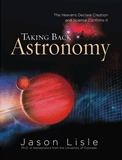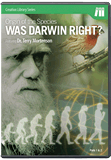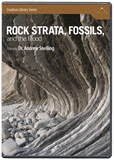News to Note, March 28, 2009
A weekly feature examining news from the biblical viewpoint
Bullying AiG; proof of “evolution”?; Charles Darwin, fashionista; and more!
This week:
1. Bullying AiG
Answers in Genesis has once again been bullied on the news media playground.
Colby Cosh, writing in Canada’s National Post, finally got around to using fossils described several months back in the journal Nature as ammo against Answers in Genesis.
2. LiveScience: “Snail Shells Getting Longer”
Snails of today have longer shells than snails of yesterday—is it evolution in action?
A study led by Jonathan Fisher of Queen’s University has revealed a “dramatic increase” in the size of certain Atlantic Ocean snail shells. Fisher and his team measured a host of historical snail shells from the collections of the Academy of Natural Sciences of Philadelphia. They then compared the size to modern snail shell samples retrieved from the same natural locations.
The researchers found that in a little under a century, snail shell lengths have increased 22.6 percent. Although the team is not entirely sure why the snails are growing larger over time, other researchers have found that larger snails spend more time eating and less time resting than their smaller kin. Fisher also notes that there are fewer predatory fish nowadays; presumably the predatory fish would prefer to prey on larger snails. Finally, today’s water temperature is warmer, which could encourage the growth of larger snails.
Although we haven’t seen the word yet, our guess is that it will only be a matter of time before someone reads Fisher’s research and declares, “evolution in action!” If one defines evolution simply as “change” (or, more precisely, as change in the gene frequencies in a population), this could indeed be an example of evolution. But watch out for the bait-and-switch—the argument that this sort of “evolution” proves that molecules could have evolved into men over millions of years.
For more information:
3. ScienceDaily: “Human Adult Testes Cells Can Become Embryonic-like”
Scientists have found yet another method to induce adult cells into embryonic-like stem cells (that is, without destroying human embryos).
The researchers, from Georgetown University Medical Center, have converted testicular stem cells (from adult testes) into pluripotent stem cells through a simple method. According to the team, the cells are “potentially capable of morphing into any cell type that a body needs, from brain neurons to pancreatic tissue.” Not only did these stem cells not require the use (and destruction) of an embryo; the conversion also took place without the use of additional genes, making it safer for their eventual use in humans. The ScienceDaily report continues:
Being able to use adult stem cells for this type of cell-based therapy offers a number of advantages over other strategies currently being explored, says [study leader Martin] Dym. The use of embryonic stem cells is controversial because it necessitates destruction of an embryo, and pushing fully mature cells, such as skin cells, back into a stem-like state requires use of cancer genes, and has therefore been viewed as potentially risky for human treatment, he says.
In this style of treatment, men could easily be treated using their own cells, which normally are converted to sperm but are induced in the lab to be pluripotent. The cells can even be frozen and used in the future. Dym explained, “Given these advances, and with further validation, it is possible that in the not-too-distant-future, men could be cured of disease with a biopsy of their own testes.”
While much more research will surely be required, we can praise God for yet another avenue of life-honoring stem cells that may one day be used in medical treatments.
For more information:
- The Debate over Stem Cells
- Stem Cells
- Get Answers: Cloning, Suffering
4. Charles Darwin, Fashionista
It’s the next step in the “hero worship” culture surrounding Charles Darwin: examining his every recorded move.
5. BBC News: “Tracked Asteroid Debris Collected”
An asteroid has collided with the earth! But we’re happy to report that the earth won.
The car-sized asteroid 2008 TC3 was first detected last October as it tumbled toward our planet just before a collision that decisively favored the earth. The asteroid disintegrated above Sudan, but researchers recovered 47 fragments they believe to be from the asteroid (they later recovered 233 more fragments, reports National Geographic News). According to a report in Nature, this is the first time debris has been collected from an asteroid tracked as it fell to earth.
According to report author Peter Jenniskens, the asteroid exploded at 23 miles (37 km) above the earth’s surface. Intriguingly, however, the asteroid fragments have a unique chemical makeup marking it as a ureilite, a rare type of asteroid, the team writes. National Geographic News reports that ureilites are thought to make up only 1.3 percent of all known asteroids.
The researchers believe 2008 TC3 may have been “relatively young, having spent only a few million years in the inner solar system,” BBC News reports, though the statement was not justified.
For more information:
6. More Trouble in Texas
Texas and evolution seem to be popular sibling topics in the news these days.
Last week we described the battle underway in the Texas congress over whether private, nonprofit schools should have to follow state educational restrictions—a debate centered around the Dallas-based Institute for Creation Research’s desire to offer master’s degrees.
And Don’t Miss . . .
- Could humans be facing “dysevolution”? According to anthropologist Daniel Lieberman, “Our bodies are not that well designed for the world we have created.” Lieberman believes part of the reason humans evolved was our consumption of high-energy food sources, but he attacks fast food and sugar-rich snacks as conflicting with humanity’s declining rate of physical exertion. He also argues that culture interferes with natural selection, encouraging “the protection of people who physically might not survive in a hunter-gatherer society” and allowing the rise of diseases like diabetes and myopia. “We need to think more like Darwin and act more like hunter-gatherers,” says Lieberman, who claims we should outlaw fast food and enact measures to force more walking and exercise.
- Scientists have found water on Mars. (Pardon our apparent apathy; while there certainly could be briny pools on Mars, as the article suggests, evolutionists’ game of crying wolf grows stale.)
- Want a look at the depressing worldview of the consistent anti-creationist? John Rennie argues that we’re “nothing special” and clings to the unprovable Copernican principle as strongly as Christians should cling to their Bibles. But if what he says is true, what delirium has caused him to write it down, or believe anyone should care (let alone comprehend)?
- “Finding a complete fossilized animal is extremely rare. Soft tissues tend to decay rapidly after death, and harder parts tend to disarticulate or break into pieces, often leaving very few clues as to what the original animals looked like.” Consider that quote the teaser to a LiveScience article on an exceptionally well-preserved—but otherwise mysterious—fossil.
- ScienceNOW carries a report that indicates the emotions conveyed by music are universally identifiable. While researchers chalk this up to Darwinian evolution, it seems to fit much better with the model of humans as created in the image of God.
- In a sad story, the Mail reports on a generally unreported danger of abortion clinics: death of the mother. And perhaps even more tragic—yet eerily “coincidental” (some might say)—is news of a plane crash that killed nine family members and family friends of a California abortion clinic owner. The “coincidence” is that the plane crashed in a cemetery near a memorial for aborted and other unborn children. (Our prayers are with both families.)
For More Information: Get Answers
Remember, if you see a news story that might merit some attention, let us know about it! (Note: if the story originates from the Associated Press, FOX News, MSNBC, the New York Times, or another major national media outlet, we will most likely have already heard about it.) And thanks to all of our readers who have submitted great news tips to us. If you didn’t catch all the latest News to Know, why not take a look to see what you’ve missed?
(Please note that links will take you directly to the source. Answers in Genesis is not responsible for content on the websites to which we refer. For more information, please see our Privacy Policy.)
Recommended Resources

Answers in Genesis is an apologetics ministry, dedicated to helping Christians defend their faith and proclaim the good news of Jesus Christ.
- Customer Service 800.778.3390
- © 2025 Answers in Genesis




